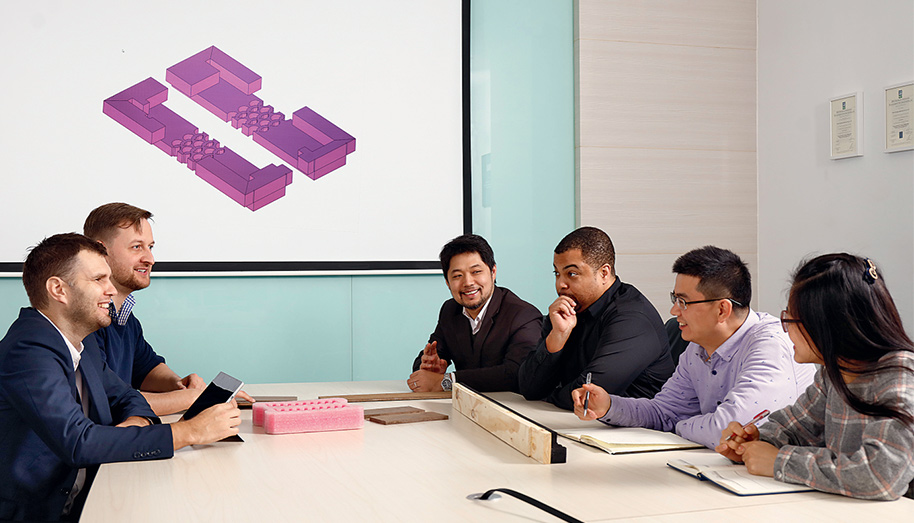Insights
Sustainable Packaging Solutions
Reducing your environmental impact
Reducing the impact your business leaves on the environment is simple in some aspects, but in others, it proves to be much more of a challenge.
The Challenges You Face
Shipping manufactured goods often involves using a number of transport modes and several types of materials to protect your products, with those packaging materials often being used only once and then trashed. The good news is that many of these packaging supplies and products are now made from materials that don’t sit in landfills for years. However, the fact remains that packaging materials still have to be manufactured, and that manufacturing process also has a major impact on the environment through the use of energy and the creation of more waste.
Reducing your environmental impact through sustainable shipping means looking at the process behind the creation of the packaging materials in addition to looking at the materials themselves. Moving to sustainable shipping isn’t always easy. While it may seem simple to replace Styrofoam packing peanuts with something like air bubbles, small decisions like this are just the tip of the iceberg. An important part of this is investigating options that are more sustainable without sacrificing the same quality and value that your current solutions has. To approach this topic, you can investigate it from the several different angles, as described below.
Optimizing Shipping Solutions
There's much more to reducing your environmental impact than using less and replacing old materials with recyclable ones. You need to optimize your shipping solutions without reducing your capabilities or service level to customers. Optimizing your shipping solution can be broken down into four areas:
Reducing size and weight: one factor that can greatly impact both your carbon footprint and your bottom line is the size, shape, and design of your packaging solutions. By designing, testing, and validating your shipping solutions, you may be able to cut the amount of materials used by a significant amount. Many companies continue redesigning their shipping solutions to a design that provides the right protection and handling, to minimize excess material.
Optimizing the Supply Chain: your shipping crates and other packages are just one part of your shipping process. You may find that you can reduce the amount of time your products are in transport by changing routes or using other transportation methods that save money and reduce your CO2 impact. You might be able to revise your processes so less time is spent on shipping as well. The key is to look at your entire shipping process to see where changes are possible.
Decreasing the overall cost without reducing quality: remember that your overall goal is to reduce costs and environmental impact without affecting your shipping solutions' overall quality. Make certain all redesigned shipping products are put to the test and stand up to any abuse they may experience. Otherwise, while you may lower your overall environmental impact, you may actually increase your costs due to the need to replace damaged products.
Minimize waste: evaluate your entire shipping chain to see if you are creating waste that you could avoid. Often, this is one area where things are done without much consideration. Could you replace some disposable packaging with reusable products? Reusable solutions are well suited for fixed distribution points.
"The key is to look at your entire shipping process to see where changes are possible"
Collaboration
When it comes to redesigning and optimizing your shipping solutions to reduce your environmental impact, it’s important to remember that you are not the first business to have these goals. Many companies around the world have made the transition to sustainable practices as expectations for it have increased dramatically in recent times. The best way to initiate change in your organization is by taking learnings from others. Study other businesses, both those in your industry and those that work in other areas. Learn what you can from their sustainability practices, and select some of these companies to serve as your benchmarks. From there, it can become a baseline for building a culture that cares about the environment, which can lead to new and innovative ideas to tackle sustainability as your company moves forward.
Continutally work to improve
Once you begin reaching specific goals with regards to reducing your overall environmental impact, don’t stop there. Keep an eye on your benchmark companies, your competitors, leaders in green business, and the industry as a whole. You’ll likely notice that very few of these companies rest on their accomplishments. They continue to work at reducing their carbon footprints, and you should too – there’s always something that could be changed or improved. Even if it looks like you’ve done all you can do today to reduce the impact you have on the environmental, this may not be the case tomorrow. New materials, processes, and solutions are being created all the time as technology improves. Don’t miss a chance to further improve!
How Can Nefab Help?
Nefab is a world leader in packaging solutions, and we have worked hard to create solutions that manage to be both durable and minimal in environmental impact. We can work with you to design solutions that reduce the amount of material used, are lightweight, and can lower your costs while also protecting the environment.
Contact us today to learn more about how Nefab can help you become a more sustainable business.

